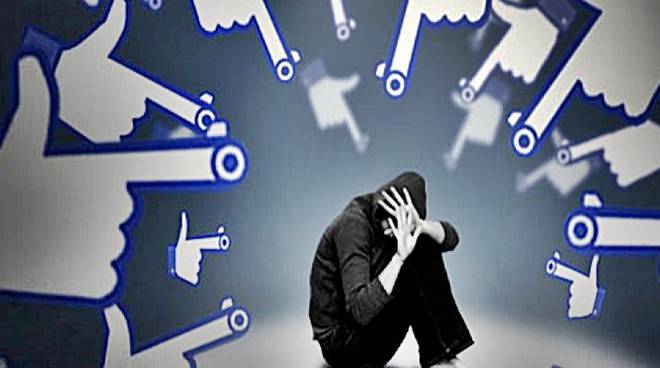We have often heard this question, Is Social media a Boon or a Curse? Everyone has their own perspective on this. For some, it’s a curse and for some, it’s a boon. It has offered recognition to a fairly large number of people. Millions and millions of ‘followers’ all around different social media platforms. But what has it actually done to us? Do we ever sit and think about how these media platforms work. Why is it that every time we open such apps there are always suggestions or recommendations for us and they are always regarding those things that we were looking for a couple of hours before? It’s a very superficial aspect of a much deeper concept. A concept that has made us humans a literal product for them. We think we control these apps, we click the like button, we comment, and we may not do so if we do not want to but that’s not always the case is it? These platforms have started to get into our heads and some in really disastrous ways. People are in anxiety as to why their current post has been liked lesser than their previous post. Why are people commenting bad about their content? Every like has started to matter. Every bad comment has started taking a toll on their minds. And this sometimes leads to things that we are going to talk about in this blog. You might have gotten an idea by the title of this blog and its high time that we keep it out in the open.

The world is facing a rough patch. Every day we hear a large number of people dying due to this widespread disease. We want to bring out some facts before you. So you know, by giving out these numbers, we are not at all undermining the death of people due to this disease. We are just trying to show how serious this problem of suicide has become. As of now, according to WHO, there are 1 million confirmed deaths in the world due to the coronavirus and the same organisation says that about the same number of people die every year due to suicide. The majority of people that die of suicide belong to the age group of 15-39 and it is not surprising that the majority of social media users in the world belong to this particular age group. Recently, a girl who was a popular social media star and was just 16 years of age committed suicide. It is so serious that by the time you read this entire blog, two people in India would have ended their lives. From social media interaction to social media fame, virtual gaming environment, and many more, the internet has truly spread its “worldwide web”. And despite all this, there has been no development in making these platforms less addictive.

The last decade and a half have seen a sharp rise in social media platforms. Facebook, Instagram, YouTube are some of the giants that have taken their place in almost everyone’s daily life. We have found a pseudo world of comfort which we think is controlled by us but that’s just another part of that ‘deeper concept’. Scrolling through the feeds for hours without any real-world interaction has made human beings lonely in a very interesting and fearful way. We spend most of our time on these platforms just watching someone else’s life and getting affected by their problems which may not even be real. We have made up a parallel world of dark comfort for ourselves and that too just at an arm’s length. The age group of 15 to 39 is considered as youth according to UNESCO(2016). People of this age group are at more risk of committing suicide because this phase is where we go through changes both internally and externally. Hormonal changes, physical changes, mood, and a zeal to achieve great heights all come at once with some other factors and challenges like a broken family, intimate relationship, break-ups, poverty, sexual abuse, and vulnerability. Adolescent suicide is a problem that most of the countries of the world face with no proper solution to it. European Conference on Information System conducted research that showed how Facebook was used by many teenagers to livestream their suicide attempts and how social media was used to encourage suicidal elements including self-harm techniques. There was a case of Amanda Todd, a girl living in Canada where she was forced and blackmailed to show off her breasts on a live webcam. Her screenshot was later posted on social media where many of her friends and classmates saw the pics. She posted a video on YouTube before killing herself where she described whatever happened to her and how she was cyberbullied that led her to commit suicide. This is just one of many examples of cyber bullying. In most of the cases, the culprits of cyberbullying remain anonymous but the victims go through all sorts of pain and suffering, they do not seek help in fear of family and society. They try to cope with the situation which is not possible in many such cases and leads to suicide attempts. They feel ending their life is better than going through all the shame and pain.

One of the many reasons is early fame and limelight and let us explain that for you all. There is a large number of ‘influencers’ and ‘social media stars’ all around that are below 20. This is one of the most crucial times for a person because we go through a lot of changes all around us. We just don’t know a lot about the outside world and how it works. It’s good to have fame, money, and recognition at such an early age but the problems that come along with it, many are not mentally strong enough to deal with it. We see kids making funny videos and posting pics on social media all day long. Just one day of no post can make them go all berserk and full of anxiety and that too at such an early age is not natural and the reasons are obvious excessive social media addiction. They are in constant need of validation from people, their ‘followers’. Everything they do is in some way or the other dependent on how their followers are going to think about it. This constant need to please a bunch of people you don’t know is what leads to situations that slowly become out of control. Teenage suicides are one of them.

The Internet is a virtual space with no real borders to have a check on the activities of the user and a high spread of an image or text message can lead to unimaginable things. But committing suicide is just one facet of the coin. The other side is even darker and painful. It also has a name to it, termed as non-fatal suicide behaviour ( NFSB). It is far more disastrous cause it has a longer impact on not only the person but also their families and close people. Non-fatal suicide behaviour is termed as an attempt at suicide that does not lead to death. The attempt is done by one but the impact of it is faced by a lot of lives. Let’s try and understand it by this example. There is a girl who tries to attempt suicide, there can be many reasons for her doing so. Cyberbullying, break-ups, economic factors, and whatnot. What is she going to say to her parents for why did she do it? How are her parents going to react to the situation? In Indian society, how are she and her parents going to face all the talks about her? People often cook up their own stories and ‘possible reasons’ for the suicide attempt. And even if we exclude the social factor, we can’t ignore the parent-child interaction. They will start living in constant fear of their child making another such attempt. A study indicates that there are at least 15 to 45 suicide attempts for every adolescent that dies by suicide which means that the phase with which the victim goes through after a suicide attempt is so severe that it often forces them to commit suicide again, and this time it’s fatal. The age group of 15 to 19 years is the people who get affected the most and that’s not surprising because of various reasons that we discussed above. Suicide attempts of adolescents are twice in the case of females than males and the reasons are many for example dysfunctional family, cyberbullying, sexual abuse during childhood, etc.
What is the solution?
The possible solution to this problem is mostly internal. We may not be able to understand the mindset of the person but there are certain things that one can do to control the situation. Firstly, we need to understand the social media game and this parallel virtual life that we are living in. A constant need for validation and that too from people that we do not know have to be stopped. Yes, social media allows us to make a name for ourselves, earn money, and getting to know someone but that should not consume you in such a way that can affect your real life that is far more important than that parallel life. Secondly, it is very important to talk to elders whenever we feel something strange going on in our minds. The post inaugural social age has brought us to a crossroad where one way leads to a virtual world, a bubble of delusional ecstasy and the other to the real world, the same old hard world where our parents live. We think that our parents will never understand what we are going through. They may have a different mindset than ours and may think in ways which we think are absurd but whatever they do for ourselves, the method may be different but their intentions are always good. Thirdly, parents need to understand what this small technology can do. In this digital age, it is important to rise above the fear of missing out, and at the same time trying hands on the latest that technology has to offer, without jonesing for it. With the internet getting vast and deeper with every passing day, it’s up to them to know what their child is consuming on it. Allowing your child to become a ‘social media personality’ and letting him/her face things that are far beyond their age capacity is not good for them. And lastly, killing oneself, in any case, is not at all the solution. One may think that by doing so they are ending their misery but they do not realise the years of misery that they are leaving behind for their loved ones. Time is the greatest healer.
We hope the next time you open those apps, you are a little bit more aware and careful.
References:
Non-Fatal Suicidal Behaviors in Adolescents, Indian Journal of Psychiatry by S. Jena and T. Sidhartha
The influence of Social Networks in Suicidal Behavior, International Archives of Medicine 2015
Social media and youth suicides, European Conference on Information System 2018




3 replies on “Suicide and Social Media”
This was really touching, great work you guys
You truly write what we need to read
So so true.
Really touching…..we really need such blogs….??